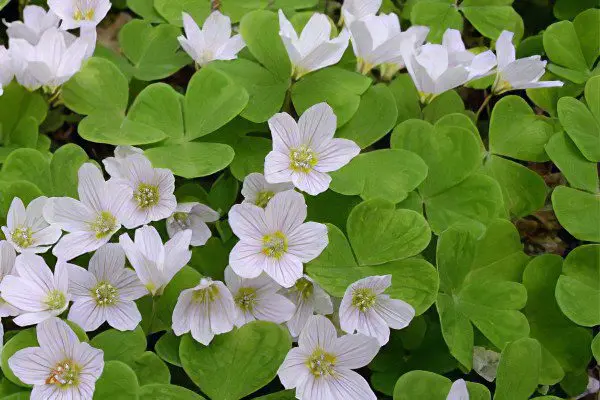Contents
Herb hare cabbage, useful properties and uses of the plant
Botanical characteristics of rabbit cabbage

hare cabbage is a perennial herbaceous plant of the Crassulaceae family. The roots are tuberous-thickened, turning into thin roots. The stem of the plant is cylindrical, erect, juicy, can reach a length of 40 cm. The leaves are opposite, sessile, oval or round, fleshy, bare, covered with a wax coating, serrated along the edge.
Rabbit cabbage flowers are small, can be painted in pink, yellowish green or pale yellow; collected in the upper part of the stem in a dense corymbose inflorescence. The fruit of the plant is a multi-leaf. The flowering period of grass is July-September. The natural distribution area of rabbit cabbage is the European part of Russia, Belarus, Ukraine and Moldova. The plant grows mainly on sandy soil, in glades and hills, along the banks of rivers and lakes, in pine forests, along roads and among bushes.
Useful properties of rabbit cabbage
In folk medicine, both the aerial part of hare cabbage and its underground part are used as medicinal raw materials. The grass is harvested during the flowering period (exclusively in sunny or non-rainy weather), the roots – in the autumn period (September-October). The grass is dried in large, well-ventilated rooms; after digging, the roots are cleaned of the ground, cut into small segments and dried in a thin layer in a ventilated room.
The chemical composition of rabbit cabbage contains tannins, flavonoid glycosides, ascorbic acid (vitamin C), starch, carotene, organic acids, B vitamins and calcium salts. Medicines of hare cabbage have an analgesic, tonic, wound healing and hemostatic effect. The leaves perfectly cleanse the skin of acne, the juice improves the functioning of the heart and calms the nervous system.
The use of rabbit cabbage
Due to its unique chemical composition, such a plant as hare cabbage has found its wide application in folk medicine. Healing infusions are successfully used for peptic ulcer of the stomach and duodenum, painful and heavy menstruation, bronchitis and severe cough.
Fresh crushed leaves are used as an external remedy (in the form of an ointment) for long-term non-healing wounds, acne, fistulas, ulcers, calluses, burns and mastitis (stagnation of breast milk). The decoction is used as an effective diuretic.
Infusion of hare cabbage
Recipe number 1. 20 g of leaves are poured into 200 ml of boiling water and infused for four hours, after which the composition should be filtered into a clean container. It is recommended to take the remedy 50 ml 3–4 times a day before meals. Indications for use – gastritis, kidney disease, prolonged diarrhea, female infertility, general weakness and fatigue.
Recipe No. 2. 50 g of crushed above-ground and underground parts of the plant are poured into 600 ml of boiling water and infused in a thermos for four hours. The resulting infusion should be used as an external remedy for stomatitis, tonsillitis, ulcers, burns, cuts. The infusion effectively removes calluses and warts.
Bunny cabbage decoction
To prepare a decoction of rabbit cabbage, pour 20 worms into 200 ml of hot water and put in a boiling water bath for 10 minutes. After the broth has cooled, it must be strained into a clean container and taken 25-30 ml 3 times a day for kidney disease.
hare cabbage juice
Before preparing the juice, the grass of the plant is well washed, doused with boiling water, then passed through a meat grinder and squeezed. The prepared juice is diluted with purified water in a ratio of 1:1, and then boiled for three minutes. Take 5 ml of juice 3 times a day with meals. Juice can also be used as an external agent, for this, a napkin is moistened with a prepared solution and applied to the affected area of uXNUMXbuXNUMXbthe skin.
In addition, young leaves and fresh shoots of rabbit cabbage are edible. Possessing a pleasant and refreshing taste, the leaves of the plant are included in the recipe for many summer salads and vegetable soups.
hare cabbage flower
The flowers of hare cabbage are small, collected in the upper part of the shoot in a dense corymbose inflorescence. The petals are pink, pale yellow or yellowish green. Each flower has five petals, five pistils and ten stamens. The flowering period of rabbit cabbage is July-September.
Flowers, together with the rest of the aerial part of the medicinal plant, are used in folk medicine as a tonic, tonic, anti-inflammatory and wound healing agent.
Contraindications to the use of rabbit cabbage
There were no contraindications to the use of medicinal infusions and decoctions of hare cabbage.









